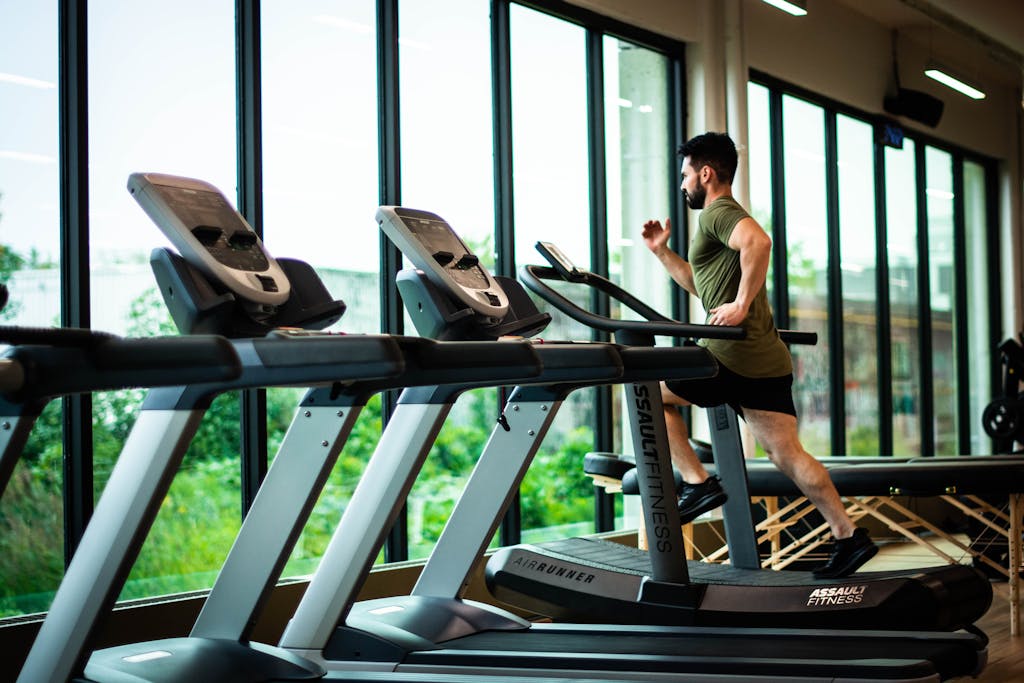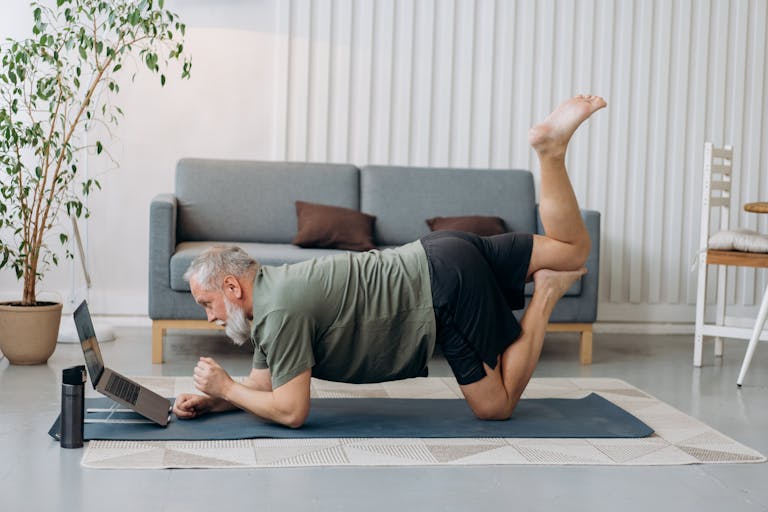Cardio Without the Chaos: Simple Ways to Get Your Heart Pumping (That Don’t Involve Running)

When you hear the word “cardio,” what comes to mind? Treadmills? Sweat-drenched spin classes? Long runs you secretly dread?
Here’s some good news: cardio doesn’t have to be intense, boring, or punishing to be effective. You don’t need to sprint, suffer, or chase a calorie number. You just need to move—consistently, and in a way that makes your body feel energized, not wrecked.
Whether you’re getting back into exercise, managing joint pain, or just looking for realistic ways to stay active, this guide will walk you through what cardio really is, why it matters, and how to find a rhythm that actually fits your life.
What Counts as Cardio?
“Cardio” is short for cardiovascular exercise—any activity that gets your heart rate up and makes you breathe harder. It trains your heart, lungs, and blood vessels to move oxygen more efficiently, which benefits almost every system in your body.
Here’s the best part: you don’t need a gym. And you definitely don’t need to run.
Common cardio options include:
- Brisk walking
- Biking
- Dancing
- Swimming
- Hiking
- Rowing
- Jump rope
- Elliptical or stair climber
- Chasing your dog around the yard (yes, that counts)
If it gets your heart pumping and you can sustain it for more than a minute or two—it’s cardio.
Why Cardio Is So Good for You
You’ve probably heard that cardio is “good for your heart.” And it is. But that’s just the beginning.
Physical benefits:
- Lowers blood pressure and cholesterol
- Helps regulate blood sugar
- Improves lung capacity and endurance
- Supports weight management
- Boosts immune function
- Strengthens your bones and joints (especially when weight-bearing)
Mental benefits:
- Boosts mood and reduces symptoms of anxiety and depression
- Improves memory and brain health
- Increases energy and reduces fatigue
- Helps you sleep better
- Acts as a built-in stress reliever
And here’s something many people don’t realize: cardio also supports recovery and performance in strength training. A healthier cardiovascular system means better circulation, faster recovery, and more energy to power through workouts.
How Much Cardio Do You Really Need?
According to the American Heart Association, adults should aim for:
- 150 minutes of moderate-intensity cardio per week
(e.g., brisk walking, casual biking, water aerobics)
OR
- 75 minutes of vigorous-intensity cardio per week
(e.g., jogging, HIIT, dancing)
You can also mix the two. But don’t get too caught up in the numbers. The real goal is to move your body most days in a way that raises your heart rate and feels good.
But I Hate Running…
That’s totally fine. Running is just one of many options—and it’s not the best choice for everyone. If it hurts your joints, spikes your stress, or makes you dread your workout, it’s okay to let it go.
Instead, try:
1. Walking (Still the Most Underrated Cardio)
It’s gentle, accessible, and surprisingly effective. Add pace, hills, or intervals, and you’ve got a powerful heart-healthy workout.
- Walk with a friend or podcast
- Try 10-minute walk breaks after meals
- Use a walking app or step counter for motivation
2. Dancing
Whether it’s a dance class or just moving around your kitchen to music you love, dancing gets your heart rate up and your endorphins flowing.
- 3 songs = about 10 minutes of cardio
- Make it a morning or evening routine
3. Low-Impact HIIT
High-Intensity Interval Training doesn’t have to mean jumping lunges. You can modify it for your joints and still get the benefits.
Try:
- Marching in place for 45 seconds
- Step-outs with arm swings for 30 seconds
- Seated punches or standing side kicks for 20 seconds
Rest for 30 seconds and repeat 3–5 times.
4. Cycling or Stationary Bike
Great for those with knee or hip concerns. You can go slow and steady or add short bursts of intensity.
- Try a 20-minute ride with 30-second sprints every few minutes
5. Swimming or Water Aerobics
The best option if you’re dealing with pain, stiffness, or recovery. Water supports your body while letting you move freely.
- Swim laps, do water jogging, or try a guided water class
What Does Moderate vs. Vigorous Mean?
A good way to gauge intensity is the talk test:
- Moderate intensity: You’re breathing heavier but can still talk in full sentences.
- Vigorous intensity: You can only say a few words at a time without pausing for breath.
Start where you are. Even short bouts of low to moderate cardio add up and make a real difference.
A 20-Minute Beginner Cardio Routine (No Equipment)
This full-body routine is great for beginners or anyone who wants a no-fuss way to break a sweat at home.
Warm-Up (3 minutes):
- March in place – 1 minute
- Arm circles – 30 seconds each direction
- Gentle torso twists – 1 minute
Main Set (15 minutes): Complete the following exercises in a circuit, 45 seconds on / 15 seconds rest. Repeat the circuit 2–3 times.
- Step Touch with Arm Swings
- High Knees (March or Jog in Place)
- Standing Jacks (Low or High Impact)
- Front Kicks with Arm Reach
- Seated or Standing Punches (fast but controlled)
Cool Down (2 minutes):
- Gentle walking or pacing
- Deep inhales and slow exhales
- Stretch your arms, shoulders, calves, and hamstrings
That’s it. A full cardio workout with no equipment, no pressure, and no stress.
Tips for Making Cardio a Habit
- Pair it with something you enjoy. Music, podcasts, fresh air—whatever keeps you coming back.
- Keep it short and sweet. Ten minutes counts. Five minutes counts. Consistency matters more than duration.
- Log your progress. Seeing small wins (like more steps or longer walks) builds motivation.
- Mix it up. Walk one day, dance the next. Boredom is the enemy of habit.
- Listen to your body. You want to feel challenged, not crushed.
The Bottom Line
Cardio isn’t about burning calories or chasing exhaustion—it’s about building energy, heart health, and mental clarity that supports the rest of your life.
So if you’re intimidated by cardio, start small. Start slow. Start with what feels good. The important thing is that you start—and that you keep moving in a way that works for your body and your season of life.
You don’t need to run. You just need to move. And with a little creativity, cardio can become something you enjoy—not something you avoid.






